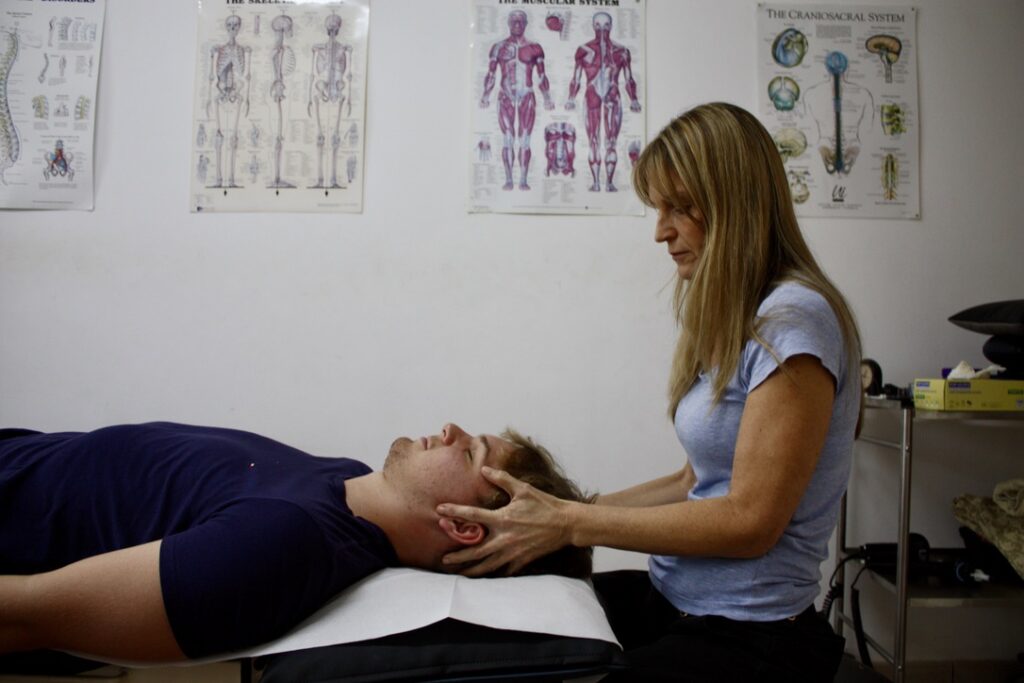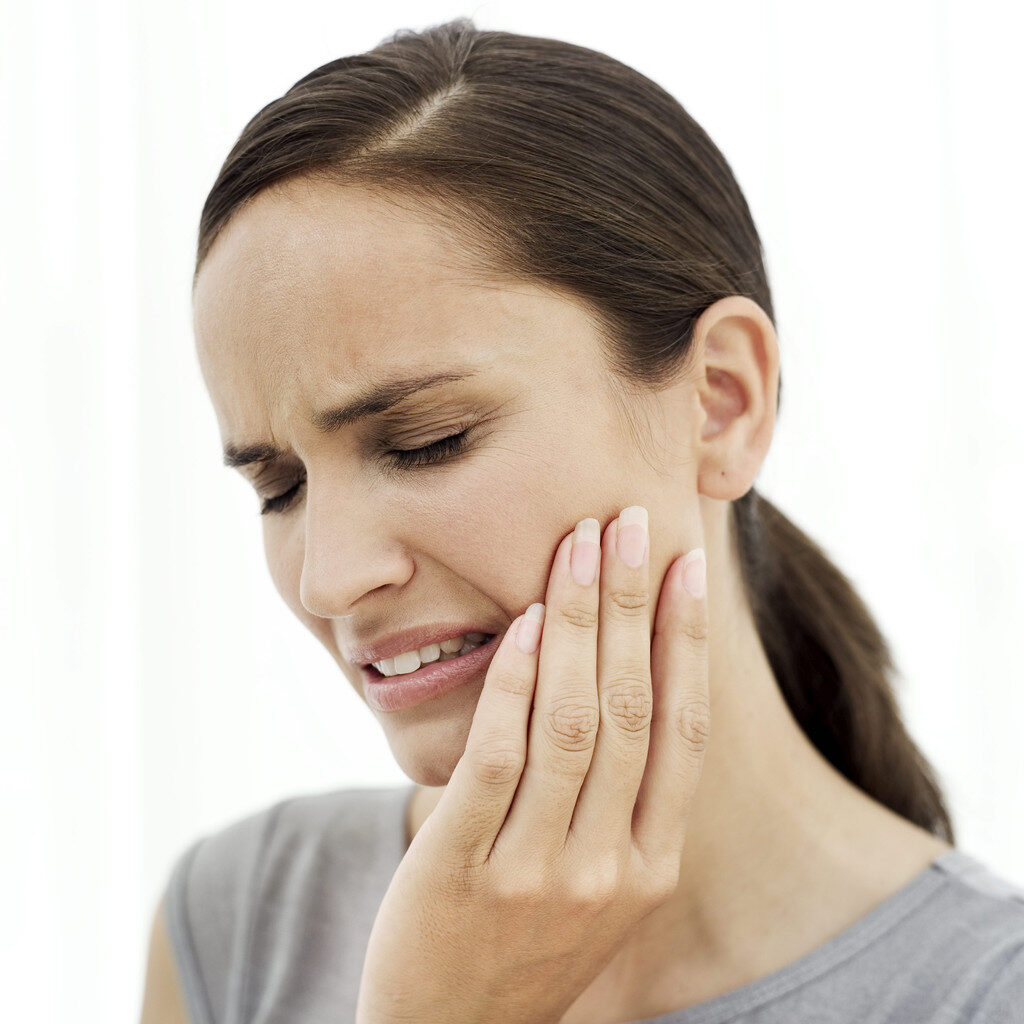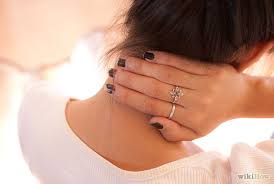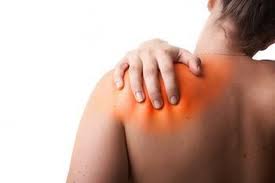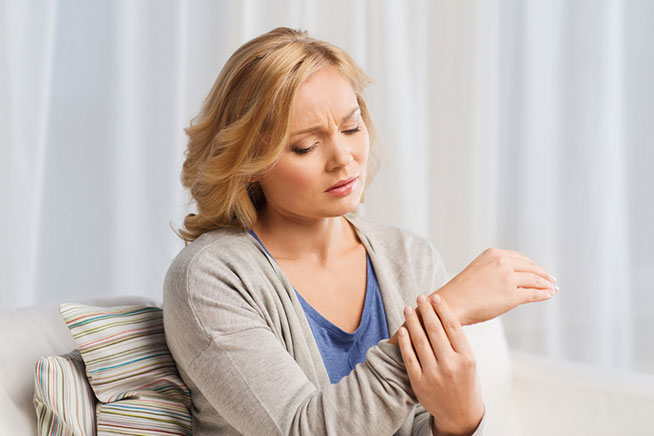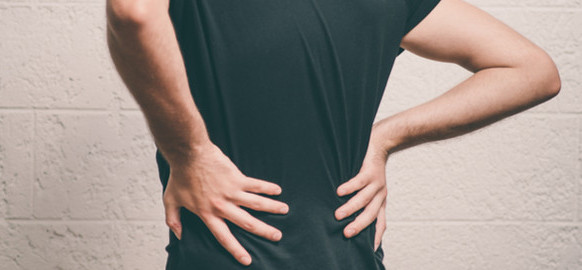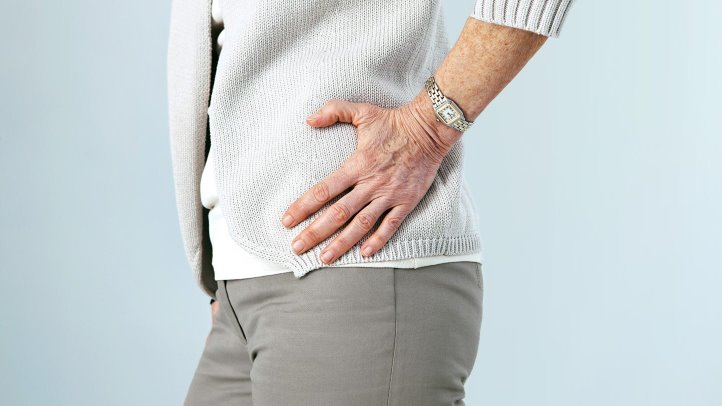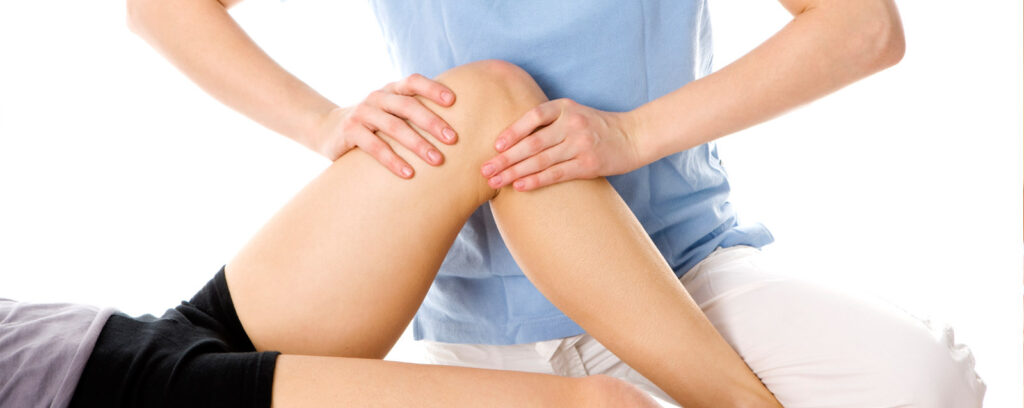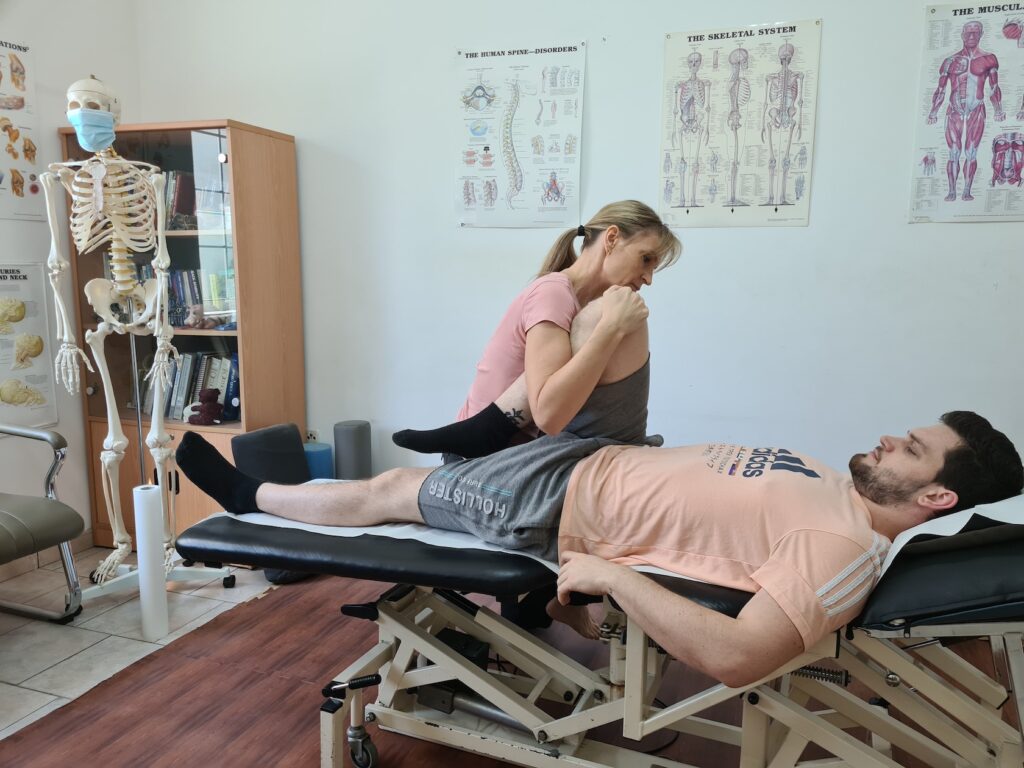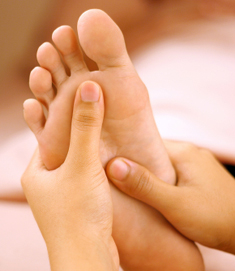Conditions
Conditions we can help with
Osteopaths are trained to recognise, diagnose, and treat a wide range of ailments. Please see below for more information on some of the most common conditions that I see in my clinic.
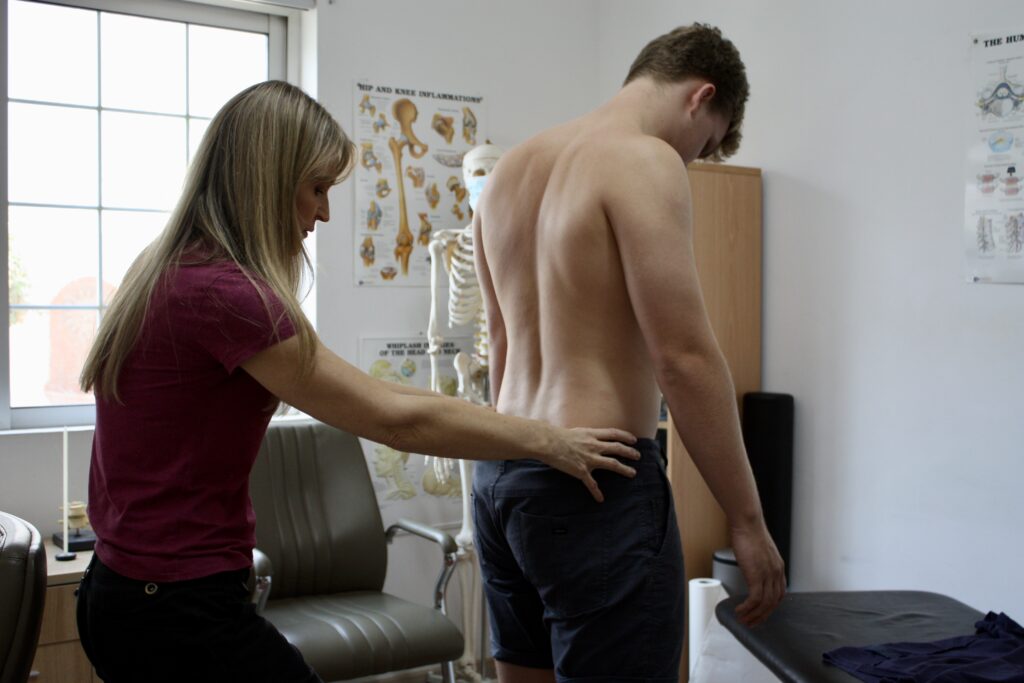
More Detailed Information
headaches
Headaches and migraines are a very frequent reason for people to seek out the help of an Osteopath. Headaches are so common that 85% of the population in a given year will experience one. They can range from the occasional headache to very regular intense headaches or migraines.
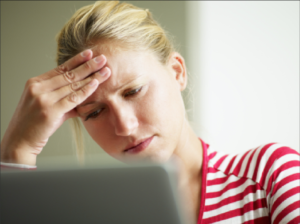
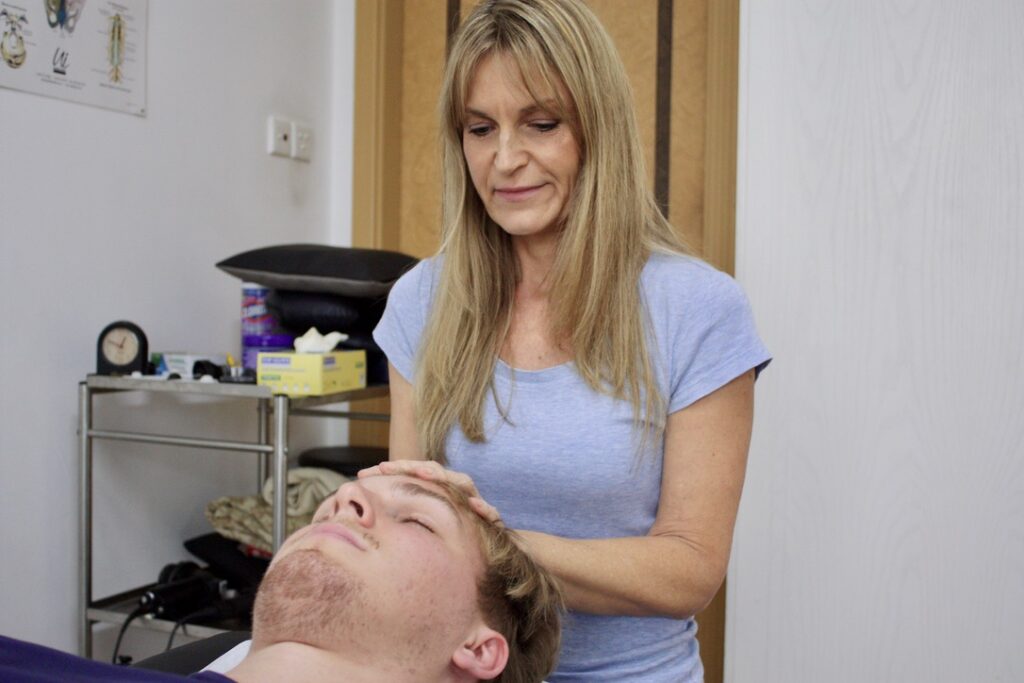
How Can Osteopaths Help With Headaches?
Osteopaths, as primary health care practitioners, are trained to differentiate headaches that are due to common causes and those due to serious pathology. Treatment involves looking at the whole body to locate the areas of increased muscle tension and joint strain which may be responsible for causing the headaches. These areas may include the neck, jaw, upper back, lower back, pelvis as well as checking for leg length inequality all of which can cause a compensation pattern that extends up the spine through the neck to the base of the skull.
Osteopathy works by restoring alignment and improving mobility in the spine and joints, decreasing muscular tension, increasing blood flow and reducing nerve irritation. Techniques we often use to provide considerable if not complete relief from headache symptoms are soft-tissue massage, muscle stretches and joint mobilisation.
You may also receive advice about posture, exercises and self-stretches to assist the treatment. For many sufferers, it is a matter of reducing the causative and aggravating factors and part of the management is therefore being aware of any triggering factors such as food, stress or postural issues that cause increased muscular tension in the shoulders, upper back and neck.
If you experience headaches use the link below to book your appointment.
Common Causes Of Headaches
Most often the cause of a headache or migraine is muscle tension or joint strain of the upper back and neck as often people hold their tension there. Poor posture at the desk or long work hours using a computer with your neck forwards towards the screen and rounded or elevated shoulders can all negatively affect the neck and head muscles.
Other causes may include muscle stress, fatigue and lack of sleep, tension, dehydration, sinus congestion, trauma, high blood pressure, dental and eye issues, sensitivities or allergies to different foods and drinks, a head injury or from colds and viruses. Rarely may it be due to tumours or meningitis.
Children and adolescents can also experience headaches. This may be the result of an awkward sleeping position or poor posture from using phones and computers. It may also be due to carrying heavy school bags or from prolonged periods of sitting at desks or from stress.
Types Of Headache
Migraines
Pain is usually intense, one-sided, pulsating or throbbing and made worse by movement. They can be preceded by visual or sensory disturbances and may be accompanied by nausea and vomiting, abdominal pain and sensitivity to light or sound. Migraines are thought to be vascular or neurological in origin with triggers such as exercise, cheese, chocolate, alcohol, travel and caffeine can be causative factors.
Sinus Headaches
Infection or irritation causes the sinus membranes to swell, blocking the channels to the nose. This results in increasing pressure and compression of the facial nerve which can result in pain between the eyes and either side of the nose.
Tension Headaches
Tension headaches affect both sides of the head including the temples and they are often described as a constant, tight ‘band’ of pain around the head caused by muscle tension in the neck. They may be linked to increased emotional stress or prolonged postural strain.
Other Common types of headache
- Cervicogenic headaches are daily headaches which are felt at base of the head near the top of the neck and sometimes pain around the eyes. These headaches are often referred from the upper neck.
- Cluster headaches are felt as a sudden intense pain on one side around or near the eye or temple. They are usually brief lasting up to 90 minutes and are often accompanied by difficulty opening the eye, redness, tears, a sweaty face or a blocked or runny nose on the same side as the headache.
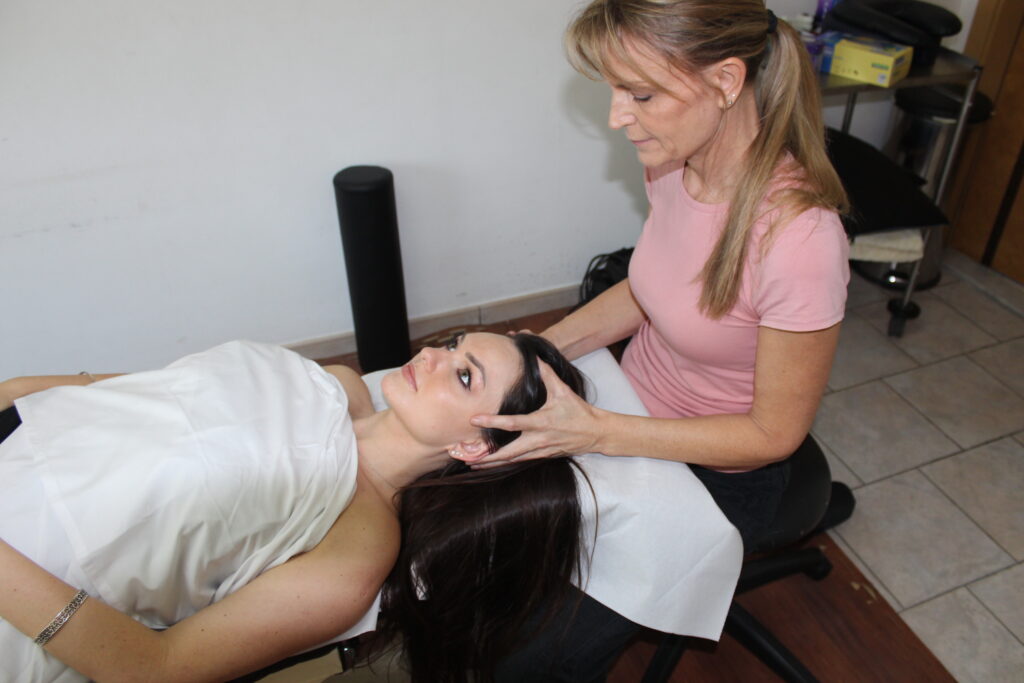
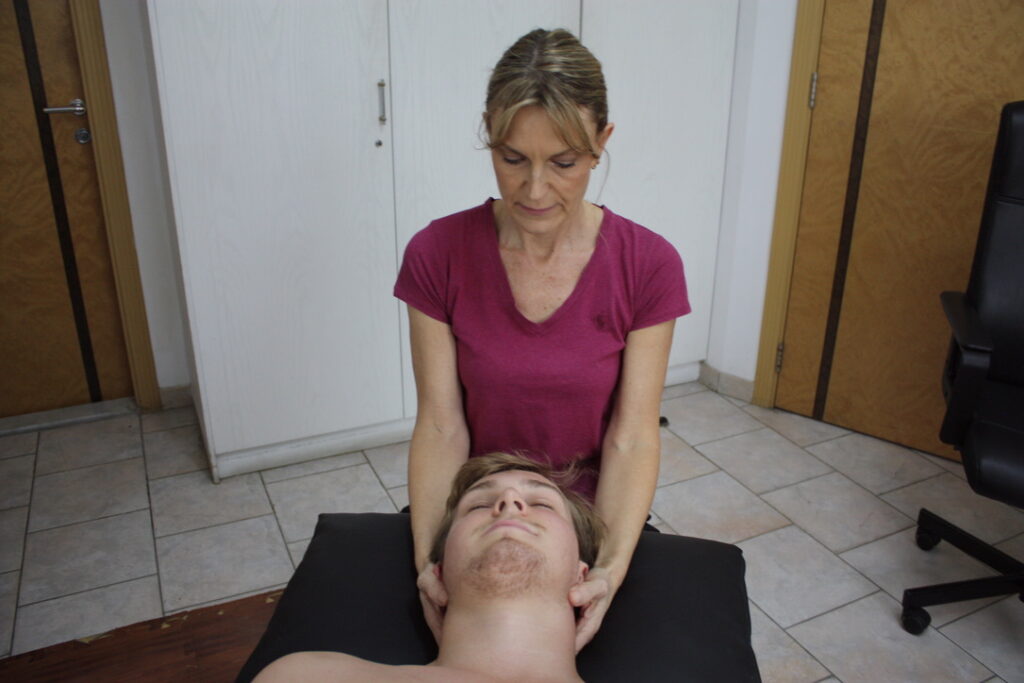
Who can Benefit from osteopathic treatment for headaches?
Anyone suffering from chronic headaches or migraine may benefit from a visit to an Osteopath. If your headache has been present for longer than usual or if your symptoms are different to normal or even if you do not usually get headaches, then it is recommended you seek assistance to help diagnose the cause and manage the symptoms.
If you suffer from headaches use the link below to book your appointment.
Suffering with headaches?
I can help you find a diagnosis and effective solution to achieve long lasting results.
Call or fill out a contact form to make your booking.
Jaw Pain or Temporomandibular Disorder (TMD)
The temporomandibular joints (TMJ) are located just in front of your ears, where the jaw joins on to your skull. Pain experienced in this area can also radiate into the neck, cheeks, jaw and inside the ears. Problems can arise from many structures in and around the joint, which include the muscles, joint surfaces and a small disc which sits inside.
Your jaw may also click or pop when you open or close your mouth and can feel restricted or locked making opening the mouth difficult. It is the small disc inside the joint that when it is not positioned correctly can cause the jaw to click. People suffering with jaw pain may also experience headaches especially in the morning and pain or ringing in the ears known as Tinnitus. It is estimated that between 5-10% of people experience jaw pain from joint dysfunction (TMJ strain), affecting women twice as much as men.
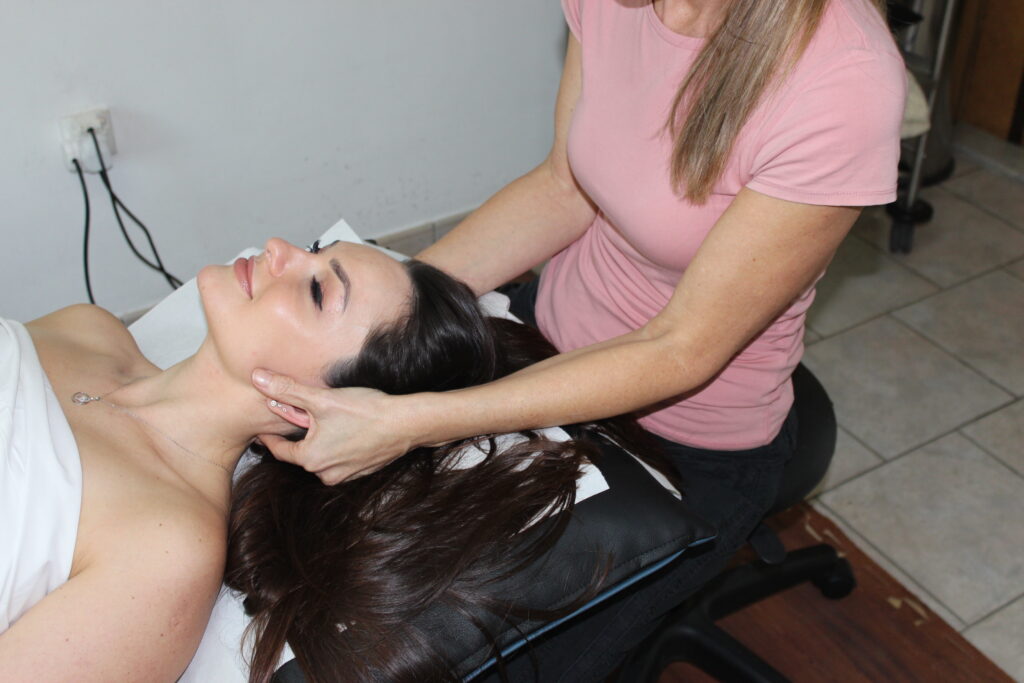
How can osteopaths help with jaw pain?
Jaw pain is usually due to restriction or hypermobility of one or both TMJ joints. Osteopaths aim to effectively assess and treat musculoskeletal causes of TMJ pain by restoring the best possible function to the area. To do this, we treat the surrounding muscles, joints and connective tissue.
The treatment may involve manual techniques such as soft tissue massage and stretching. It can also be good for increasing the range of motion in the TMJ joint which can help you open your mouth wider. In addition, Osteopaths examine and treat any dysfunction in the muscles of the throat that affect your jaw, the vertebra in your neck and upper back and the bones in your head and face. Dysfunction in the lower spine, pelvis and leg length imbalances can also contribute to jaw pain due to the rest of the body having to compensate all the way up to the jaw.
Osteopaths are also able to provide advice on ways to self-manage the condition such as give you advice on things you can do to reduce pain or clicking, such as not yawning too widely or choosing soft foods. You may also be given some jaw exercises in order to improve the way that the joint works and to strengthen the muscles surrounding it. If stress is causing symptoms, counselling and relaxation therapy can help some people. We may advise you to put a heat or ice pack on the jaw joint area to help soothe it.
If the cause of jaw pain is due to ongoing orthodontic work then osteopathic treatment may help to alleviate the pain and dysfunction throughout this process. If we think your TMJ issues stem from a dental issue then we may also advise a dental check-up, as sometimes problems can be resolved with input from both professions. If clenching is an issue, you may find it useful to wear a mouth guard or splint to bed to alleviate pressure on the jaw and teeth. This is a cover made from hard or soft plastic that fits over your upper or lower teeth which changes the way your teeth close together to prevent you grinding them.
If you are suffering with jaw pain use the link below to book your appointment.
Causes Of TMJ Dysfunction
Pain in the TMJ can have different causes, but the most common ones are repetitive motion and clenching or grinding the teeth. Jaw problems can also result from nail biting or holding things between your teeth, which you may do more when you feel anxious or stressed. People who are highly stressed will often clench their jaw in their sleep, which may lead to waking up with a sore jaw or headaches. Other causes may be ‘wear and tear due to Osteoarthritis, injury or impact to the face or jaw, stress related tension or an uneven bite due to poorly-filled teeth, crowns or dentures. This can result in pain and tightness in surrounding muscles and restricted motion of the jaw itself.
There may be other side effects from dental work too that can result in jaw pain, such as pain due to having your mouth open for a long period of time or having teeth removed or root canals. These can all cause an asymmetry in the face, jaw, and upper neck. Braces and orthodontic work can cause jaw pain too, because the face and head have to adapt to changes to straighten the teeth when they are adjusted. Sometimes the actual cause may be unknown.
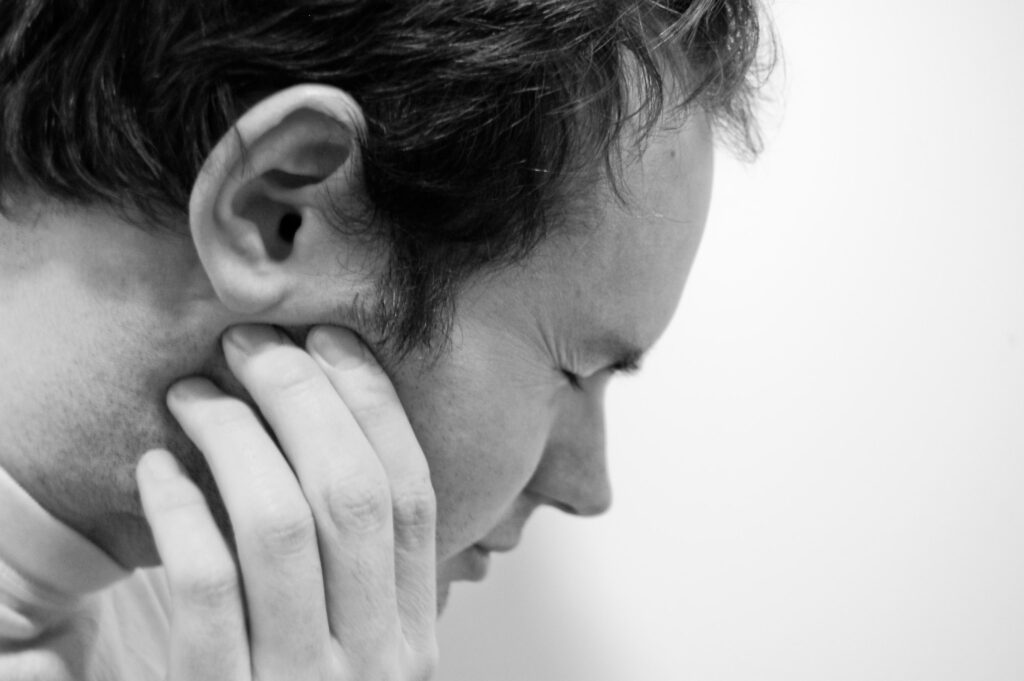
Suffering with TMJ?
I can help you find a diagnosis and effective solution to achieve long lasting results.
Call or fill out a contact form to make your booking.
Neck Pain
Neck pain is common in people of all ages and is often caused by the way we use our necks. Poor posture when standing or sitting, working bent over a computer, driving long distances, stress and tiredness are all factors that can cause the muscles and joints in the neck and upper back to become tight and stiff. Around one third of adults suffer with neck pain at some point in their lives.
Neck pain and stiffness can be localised, but it may also radiate to the head causing headaches or to the upper back, shoulders and arms. If a nerve root in the neck has been irritated, you may also experience pins and needles, numbness or weakness in your hands, arms. Nerve root irritation is usually caused by a bulging disc or ‘wear and tear’ to the spinal joints.
The National Institute for Health and Care Excellence (NICE) recommends Osteopathy for the treatment of non-specific neck pain. This includes neck pain caused by postural issues, neck strain, sports injuries, anxiety and depression.
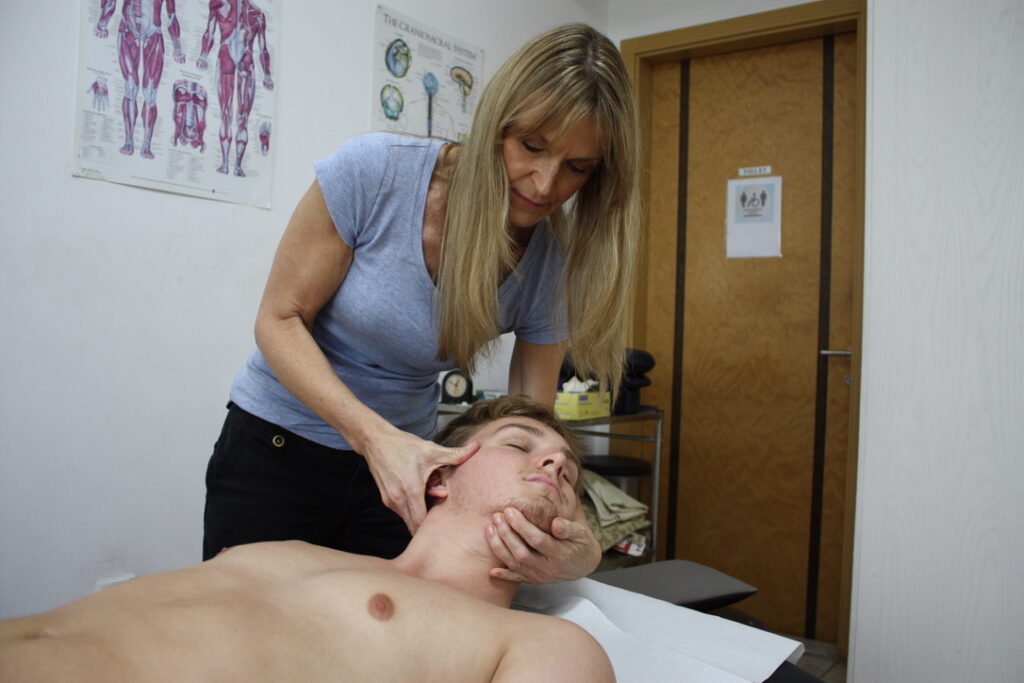
How Can Osteopaths Help With Neck Pain?
Osteopaths perform a detailed assessment to work out the cause of your neck pain. Part of the physical examination involves assessing your posture to determine if the load placed through the joints in the neck is too great. Osteopaths are also able to assess the small movements of the individual facet joints of the neck to check if they are moving well. If Osteopathic treatment is appropriate, it may include soft tissue massage, muscle stretches, mobilisation and possibly manipulation of the neck and spine. The aim is to reduce pain and improve the movement of the joints of the neck, enabling them to return to optimum health, alignment and function. It also aims to help prevent further episodes of neck pain. Osteopaths will also give you advice on lifestyle, posture and exercises to do at home. In some instances, you may be referred to your GP for an MRI scan, X-ray or other tests to rule out possible underlying conditions.
If you have neck pain use the link below to book your appointment.
Common Causes Of Neck Pain
The neck is the most mobile part of the spine and as such it is can be the cause of major discomfort and is also vulnerable to injury. Neck pain can also be associated with headaches which are known as Cervicogenic headaches. These are often due to tension in the muscles and joints of the neck referring pain up into the head and factors such as clenching or grinding your teeth at night can be another causative factor.
Postural Pain
Postural pain and stiffness is often the result of prolonged and unnatural postures that our bodies are not designed for. This may be slouching all day in the office or sitting at a work station that is not set up correctly for you, all made worse by stress and tension. Adopting these poor postures means the joints, ligaments, muscles and spinal discs are all put under increased pressure, leading to irritation, pain and discomfort. Your neck might become very stiff generally, or particularly restricted to one side. For example, you may be having difficulty looking over your shoulder when parking the car.
Common Neck Injuries
'Cricked' neck
Some people have experienced waking up one morning with a painful crick in the neck when the neck feels blocked in it’s movement. This can be extremely painful but these ‘cricks’ are mainly the result of acute muscle spasms in the neck, possibly resulting from a build-up of tension around the joints. It may resolve itself within a few days however receiving osteopathic treatment is likely to speed up the recovery time.
Think you may have ‘cricked’ neck?
Whiplash
Whiplash is a relatively common injury that occurs to a person’s neck following a sudden acceleration-deceleration force that causes unrestrained, rapid forward and backward movement of the head and neck. The ‘whip’ effect from a car crash or other similar events can damage the muscles, ligaments and tendons of the neck causing stiffness and pain.
Are you suffering with whiplash?
How Can You Treat Your Neck Pain?
You can help your neck pain by improving your posture and massaging or stretching your neck muscles. In the first 48 hours, you can also try applying a wrapped ice pack to the site of pain to help reduce any inflammation. After the first 48hrs, it may be more appropriate to apply heat to the affected area to warm and relax the muscles. If your pain persists for longer than a week, book an Osteopathy appointment so your symptoms can be carefully diagnosed and if your condition is amenable to Osteopathic treatment, we will help you to manage it with a treatment program tailor made specifically for you.
If you have neck pain or any further questions, book your appointment now using the button below.
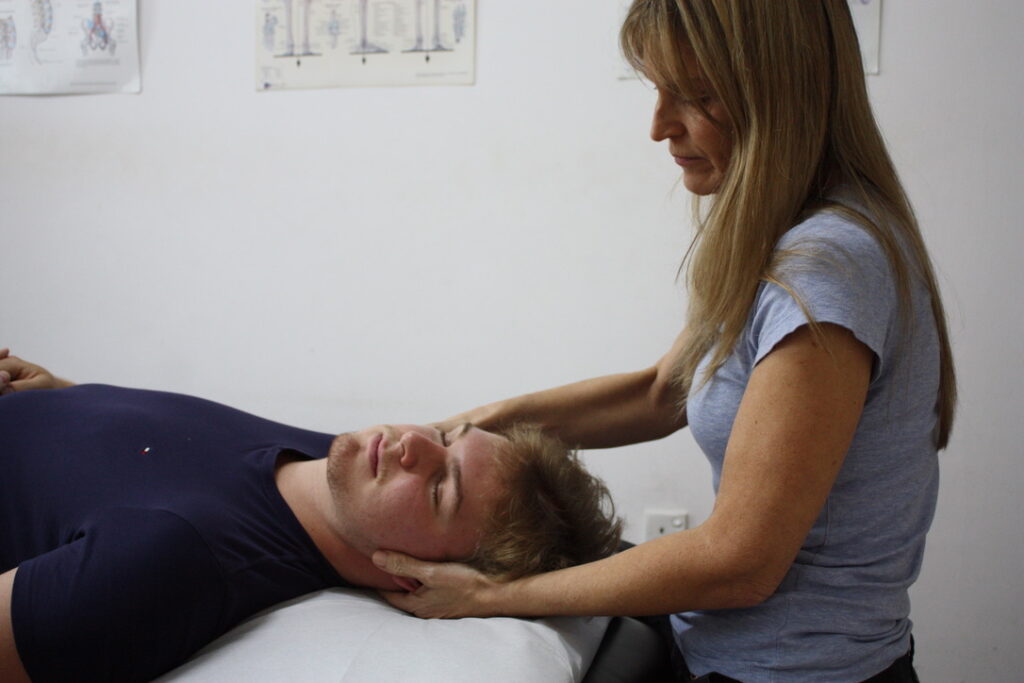
Suffering with neck pain?
I can help you find a diagnosis and effective solution to achieve long lasting results.
Call or fill out a contact form to make your booking.
Shoulder Pain
Shoulder pain is commonly treated by Osteopaths. Treatment can assist in providing effective pain relief for symptoms both in and around the shoulder joint and also for pain that may extends into the arm or down into the fingers. Shoulder pain can arise from any of the muscles, joints or ligaments not only in the shoulder but also in the neck, upper rib and spinal areas.
When we look at a shoulder problem we therefore also assess the neck and upper back movements as well as consider postures or activities that might be contributing to your pain levels. Shoulder pain can be caused by a number of factors, including acute injury during a sporting activity, weak postural muscles, the beginning of arthritic changes or by postural changes resulting from spending long hours working or sitting slouched on the sofa watching TV. If you are regularly using a computer which is not set up correctly for you, you are most likely to be reaching forward as you type, rounding your shoulders and craning your neck forward to see the screen. This posture puts particular strain on your shoulders, neck and upper back.
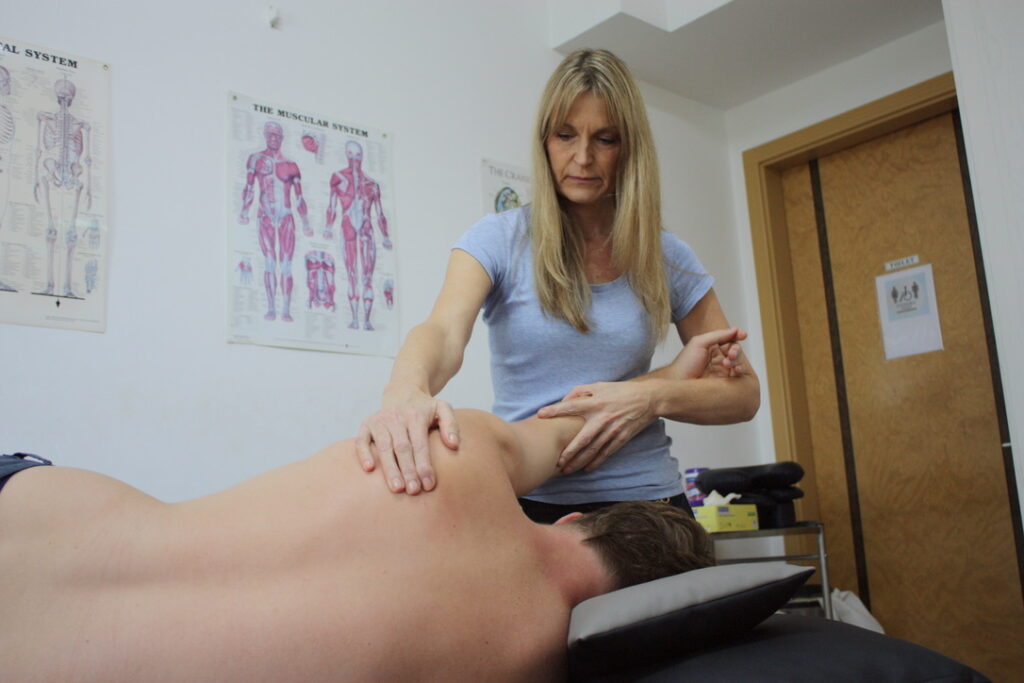
How Can Osteopaths Help With Shoulder Pain?
Shoulder problems can be complex and may take a long time to resolve. Osteopath’s will work with you to try and understand the cause of your shoulder problem.
Depending on your age, fitness and the diagnosis we may use a variety of massage, articulation and stretching techniques to try and improve the movement in your shoulder, neck and upper back and also reduce tension in any tight muscles.
We may advise on specific strengthening or loosening exercises for the shoulder and also look at posture or lifestyle habits that may be contributing to your shoulder problem.
X-rays, MRI scans or other tests may be required to make a diagnosis and we may refer you to your Doctor for further treatment when needed.
If you are experiencing shoulder pain, book an appointment using the button below.
Common Shoulder Injuries
Frozen Shoulder
Frozen Shoulder or ‘Adhesive Capsulitis’ occurs when the capsule surrounding the joint becomes thick, stiff and inflamed. People suffering from a frozen shoulder experience pain which can be severe shoulder joint stiffness. They often have discomfort at night and a limited ability to use their arm in everyday activities. The condition can come for no apparent reason and it normally eventually settles although symptoms may last as long as 18 months to 2 years.
Shoulder Arthritis
Osteoarthritis is a progressive wearing away of the cartilage of the joint leading to the two bones of the joint rubbing together causing pain. Patients who have had previous trauma or shoulder surgery are most likely to develop arthritis in later life. Symptoms include swelling, stiffness, aching and sharp stabbing pains.
Rotator Cuff Disorders
Rotator Cuff Disorders such as tears and strains – pain in the shoulder or upper arm, particularly when lifting the arm, lying on it or using the sore muscles. It is often the result of repetitive overuse of the arm and shoulder during a sport or activity or the result of a shoulder injury. Age can also play a part.
Other Common Shoulder Injuries
- Impingement Syndrome– This occurs when the bones of the shoulder pinch upon the soft tissues in the area. This may occur in several conditions including Biceps tendonitis, Sub Acromial Bursitis, Rotator cuff Tendonitis, Calcific Tendonitis and Repetitive strain Injury. Frequent symptoms include discomfort when the arm is raised out to the side or above head height, soreness when reaching behind the back, night pain and aching that radiates into the neck, back and arm.
- Chronic shoulder pain and stiffness– Shoulder Muscle Spasm and Tension
- Acromioclavicular joint pain – pain at the on top of the shoulder where the collarbone and shoulder blade join.
- Referred shoulder pain – pain that is experienced in an area away from the actual injury or problem e.g. pain in shoulder which is usually referred from the neck or upper back
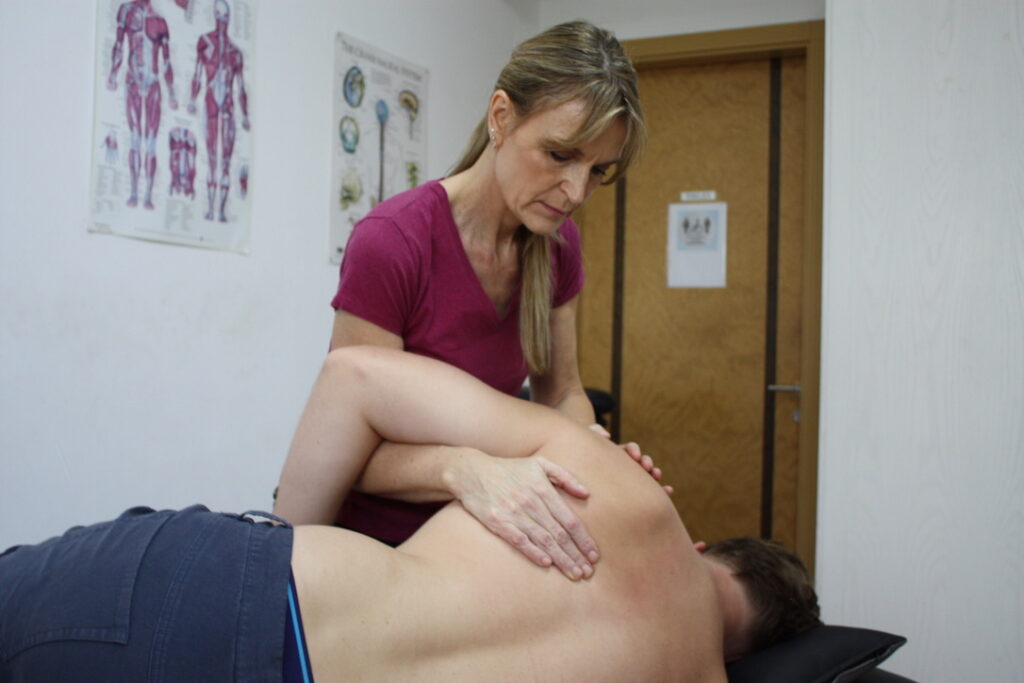
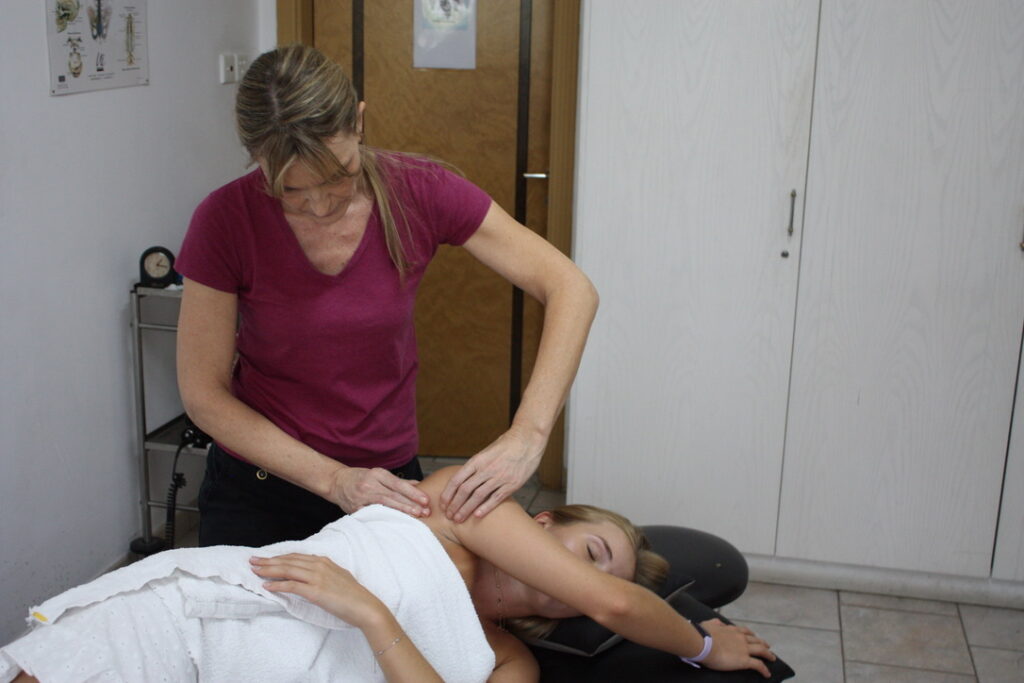
Tips to reduce shoulder strain during recovery:
- Stay active and gently move your shoulder
- Avoid pushing exercises such as bench press or press ups and heavy gym equipment
- Be aware of your posture whilst standing, writing or typing – keep your shoulder blades down and gently back and avoid slouching or bringing your head forward when sitting
- Lift and carry objects close to your body
- Avoid front crawl when swimming
- Throw balls underarm
- Avoid overhead activities
If you are experiencing shoulder pain, book an appointment using the button below.
Suffering with Shoulder pain?
I can help you find a diagnosis and effective solution to achieve long lasting results.
Call or fill out a contact form to make your booking.
Elbow, Wrist and hand Pain
Elbow pain is most commonly due to overuse/repetitive activities, such as gripping a tennis racquet, golf club, screwdriver, doorknob, typing or painting. Trauma, such as a fall or knock to the elbow or arthritis can also cause pain. Symptoms can include a weak grip, a constant ache especially at night or sharp pain on moving the elbow and if trauma is involved, there can be swelling. Arthritis can also cause swelling too and a grating noise in the elbow joint. The symptoms are often made worse by gripping such as a hand shake or lifting and moving the elbow.
Osteopaths can assess the cause of your elbow, wrist or hand pain and if appropriate provide treatment and advice. Treatment may include massage, joint mobilisation, stretching and strengthening program of exercises to do at home. As well as treating your elbow, wrist or hand directly, we may also work on your arm, shoulder and upper back, if we feel that they are contributing to your symptoms.
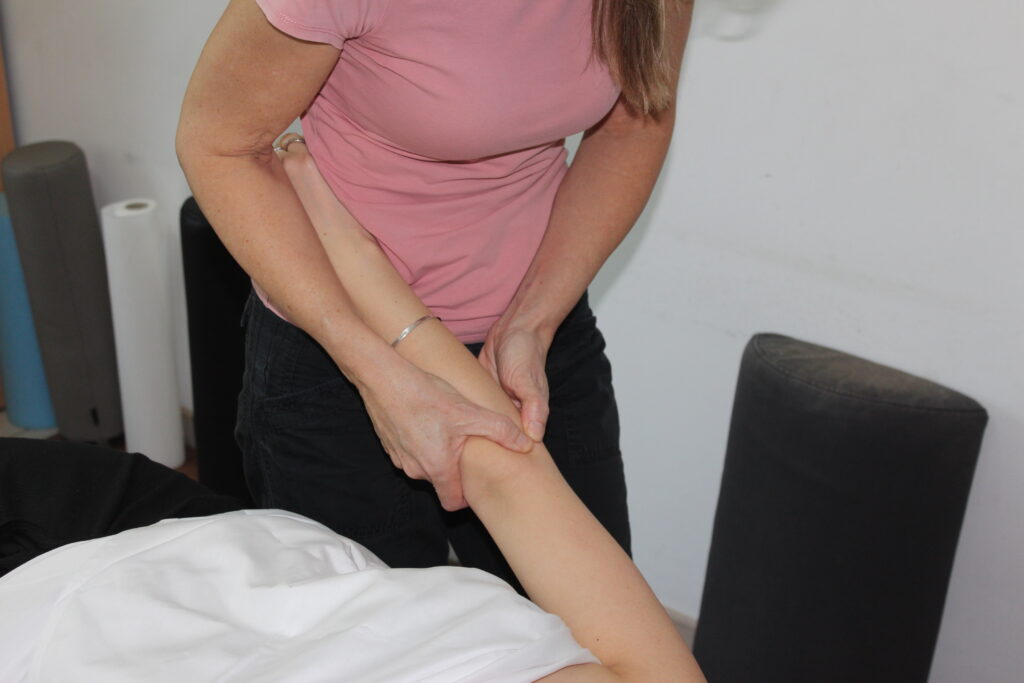
How Can Osteopaths Help With elbow, wrist and hand Pain?
Osteopaths look at the alignment of the bones and joints of the wrist and elbow as well as at the tension in the muscles. We also look at how wrist and elbow problems may be influenced biomechanically from other body regions like the shoulder and upper back. Osteopaths treat both acute and chronic problems in a gentle way. Don’t self-diagnose, come in for a professional assessment as it is essential to find the correct diagnosis. This is the key to effective treatment and long lasting results.
If you are experiencing elbow, wrist or hand pain, book an appointment using the button below.
Common Elbow Conditions
Tennis and Golfer’s elbow
Both of these conditions involve increased tension of the tendons of certain muscles because the muscles themselves have been overloaded or overstrained. In turn, the tendons pull harder on the structures they attach to including elbow ligaments and the bone. Both of these conditions can be stubborn to recover and recovery rates can vary a lot from individual to individual.
Tip of Elbow Pain
Olecranoburstitis is often caused by a blow to the tip of the elbow or repetitively leaning on it or rubbing it. Fractures need to be ruled out by x-ray or scans and infection may also need to be ruled out. The tip of the elbow will appear hot and swollen.
Muscle problems
These may arise from simply being over-strained through heavy or repetitive movements giving pain around the elbow and into the forearm. Sometimes tight muscles around the elbow can also compress and irritate nerves feeding into the hand, resulting in tingling or numbness there. Very heavy manual work or workouts involving hand weights can create so much ‘bulking up’ of the lower arm muscles that it causes internal pressure pain along the front of the forearm and pins and needles in the hand.
Common Wrist And Hand Conditions
Carpal Tunnel Syndrome (CTS)
A common condition of the wrist and hand that can cause tingling, pins and needles or numbness in the hand especially at night. It is caused by pressure on the Median nerve as it passes through the wrist. The nerve can get compressed from scar tissue, arthritis, pregnancy fluid retention, wrist trauma or an overuse injury where the tendons are inflamed from repetitive hand movements. Osteopathic treatment is aimed at stretching the soft tissues, freeing restricted wrist bones, draining excess fluid and improving circulation.
Arthritis
Rheumatoid arthritis and osteoarthritis can involve the wrist and hand joints. There is limited movement of the joints and swelling around the knuckles. Treatment can improve the joints range of movement and increase the comfort for the patient.
DeQuervains syndrome
DeQuervains syndrome is an inflammation of the tendons surrounding the thumb, due to repetitive movements of the thumb. It is more common in women and symptoms include pain, swelling or difficulty moving the thumb. Osteopathic treatment may improve the thumb joint movement and decrease the swelling. Osteopathy treatment of this condition can be very effective and we see people who can barely lift a cup or hold a pen returning to high level function.
Other Common Wrist and Hand Problems
Wrist or hand pain and stiffness can be debilitating as it can limit many day-to-day activities. If you have a manual job, the impact can be even more significant. There are multiple tendons that run over the wrist joint and repetitive movements of the hand or wrist with activities such as excessive smart phone use, gaming or breastfeeding for example, can lead to pain in these tendons.
- Repetitive strain injury (RSI) caused by repetitive movements and overuse (eg. computer and mouse use)
- Sprained wrist or fingers
- Referred pain, cramps or ‘pins & needles’ from the neck: We often see people who have been diagnosed with carpal tunnel syndrome or other wrist and hand conditions that are in fact caused by the neck. Treatment of the neck region is necessary in these cases.
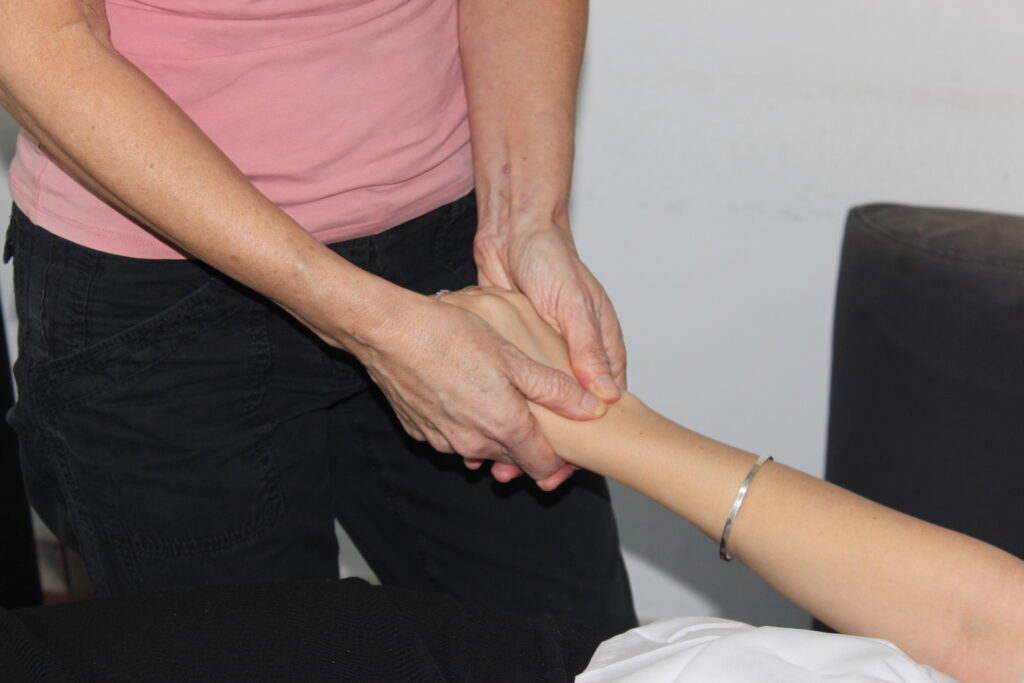
Suffering with Elbow, wrist or hand pain?
I can help you find a diagnosis and effective solution to achieve long lasting results.
Call or fill out a contact form to make your booking.
Back Pain
Osteopathic treatment can help many conditions in all areas of the body, however Osteopaths are still well known for the treatment of back pain. Low back pain is a very common problem, with reports suggesting as many as eight out of ten of us will suffer from it at some point during our lives.
Low back pain can affect anyone at any age and can often be the result of a sprain or a strain of the structures of the back such as the muscles, ligaments, joints or damage to the discs. Osteoarthritis or wear and tear in the back can also be a reason.
Back pain does not simply produce pain in the back, often it may cause symptoms in more remote areas such as the buttocks, groin, hips, and legs (commonly called sciatica). In these situations, Osteopaths assess the cause of the problem and use a variety of treatment methods to help alleviate the pain.
The National Institute for Clinical Excellence (NICE) recommends Osteopathy for sub-acute and chronic low back pain.
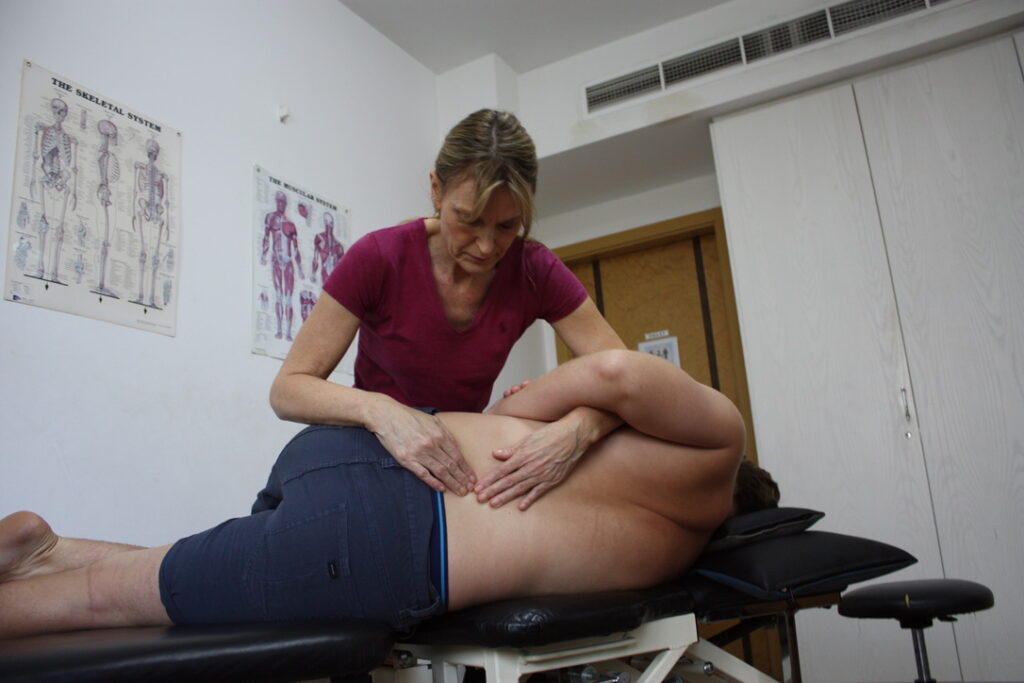
How Can Osteopaths Help With Back Pain?
The majority of back problems are non-serious and short-lived such as acute muscle strains or minor joint inflammations which respond well to Osteopathic treatment and advice and generally resolve in 3-6 treatments.
Disc sprains and herniation’s or ‘slipped discs’, are generally more serious and take longer to heal. They can also respond well to Osteopathic treatment and advice however they are likely to require a longer treatment plan.
Longer-term (chronic) postural problems are generally managed by a combination of hands-on treatment along with recommendations and advice on exercise and lifestyle factors such as office workstation set-up etc.
If you are experiencing back pain, book an appointment using the button below.
Common Causes Of Back Pain
Back pain can be caused by a single event where movements such as bending over, lifting, or twisting can result in muscle spasm and strains in the joints and connective tissues of the back causing acute pain and discomfort.
Back pain can also be related to bad posture, such as slouching at a desk all day which puts prolonged pressure on the joints, ligaments and muscles of the spine leading to irritation, sensitivity and pain.
Sometimes it can come on without any specific injury to your back. Stress, depression, posture, being overweight, sedentary living and poor lifestyle habits can all be significant factors.
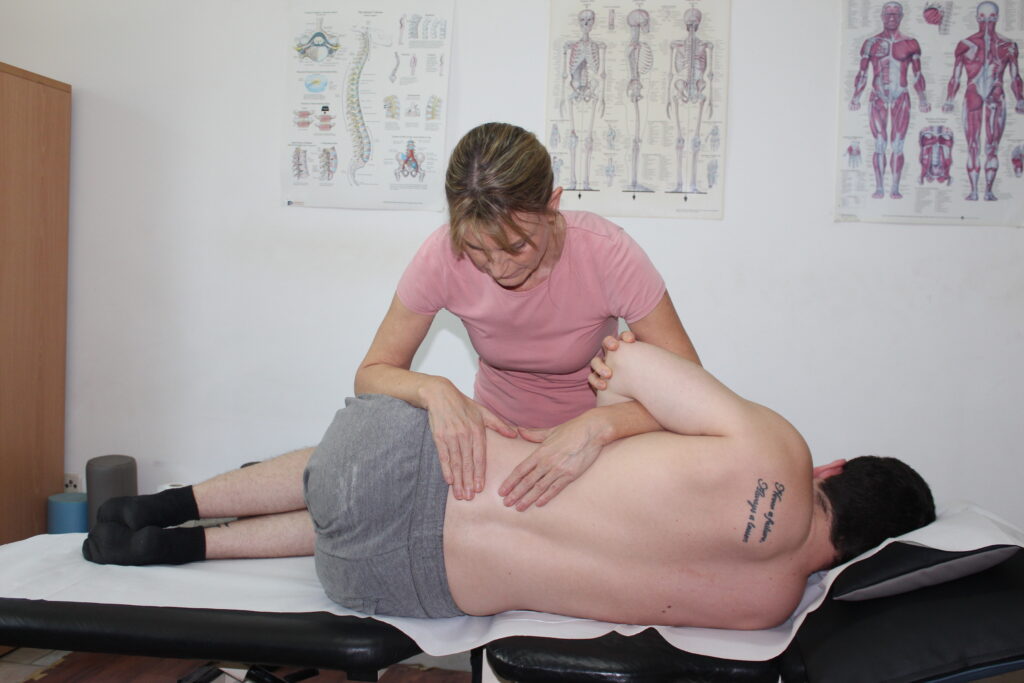
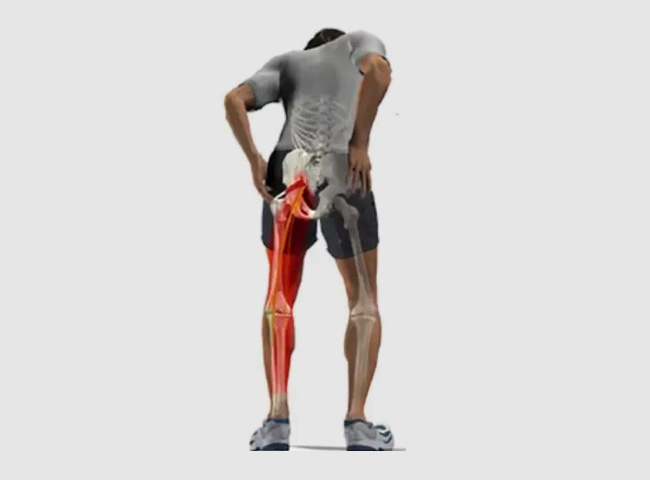
Sciatica
Sciatica is irritation of the sciatic nerve which is the longest and widest nerve in our body and is responsible for carrying information between your spinal cord and your legs. When this nerve is irritated pain is felt along its path and is typically felt in the lower back, buttocks, down the leg and into the foot.
It is also common to experience other neurological symptoms with Sciatica as well such as ‘pins and needles’, numbness, changes in skin sensation and weakness.
Sciatica is usually the result of damage to one of the joints or discs in the Lumbar spine resulting in some protective muscle spasm together with inflammation in the area of the Sciatic nerve which causes restricted movement.
Sciatica can also be caused by spasms in the buttock or leg muscles which can also compress the nerve.
Osteopathy treatment aims to decompress the nerve along its pathway and reduce the inflammation that has built up.
Massage, articulation and spinal decompression techniques can be used to help reduce tensions in your back, glutes and legs to help the nerve glide more easily.
Feel like you may have sciatica?
What Is A Slipped Disc?
What is generally referred to as a ‘slipped disc’ is more accurately described as a herniated disc. As discs are not solid they are not able to ‘slip’ in and out. Spinal discs are comprised of a gel-like centre surrounded by a tough fibrous outer layer which attaches to the vertebra above it and below it meaning it cannot move.
Therefore when a disc is said to have ‘slipped’ it refers to the squeezing out (herniation or bulging) of the gel-like substance through the tough outer fibres of the disc.
This can be caused when compression and rotational forces are applied to the spine such as heavy lifting. The outer fibrous part of the disc becomes damaged, resulting in the gel-like inner substance seeping through it towards the edge of the disc. In serious cases it can squeeze out of the disc when it is known as a sequestered disc.
Osteopaths may help herniated discs by applying gentle traction and decompression to the affected area to improve the blood flow and reduce the inflammation. They may also use gentle massage and mobilisation techniques to reduce the muscle spasm and improve the range of movement in order to facilitate the body’s own healing to resolve the problem. It is a misconception that discs can be manipulated back in. Our treatments focus on maximising movement everywhere else so that the affected area isn’t under unnecessary stress.
Sometimes x-rays, MRI scans and other tests are required to make a full diagnosis. If we feel Osteopathy treatment cannot completely heal or discover the cause of your back pain, we will refer to your GP or a specialist for investigations and management.
Do you feel like you may have a slipped disc?
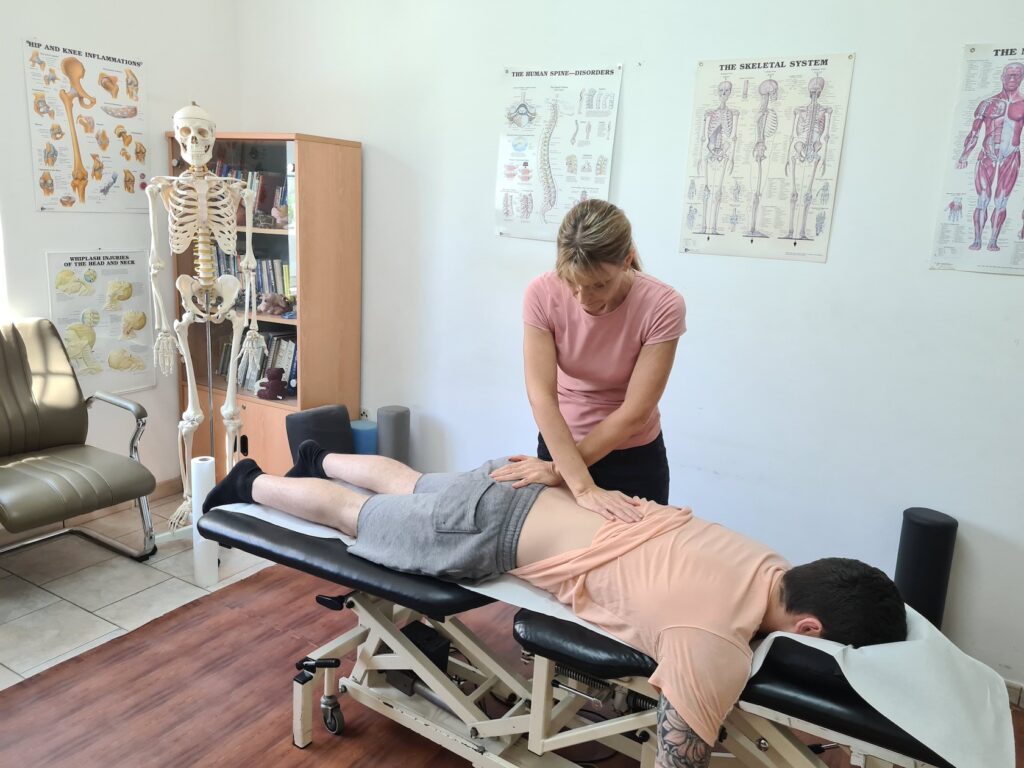
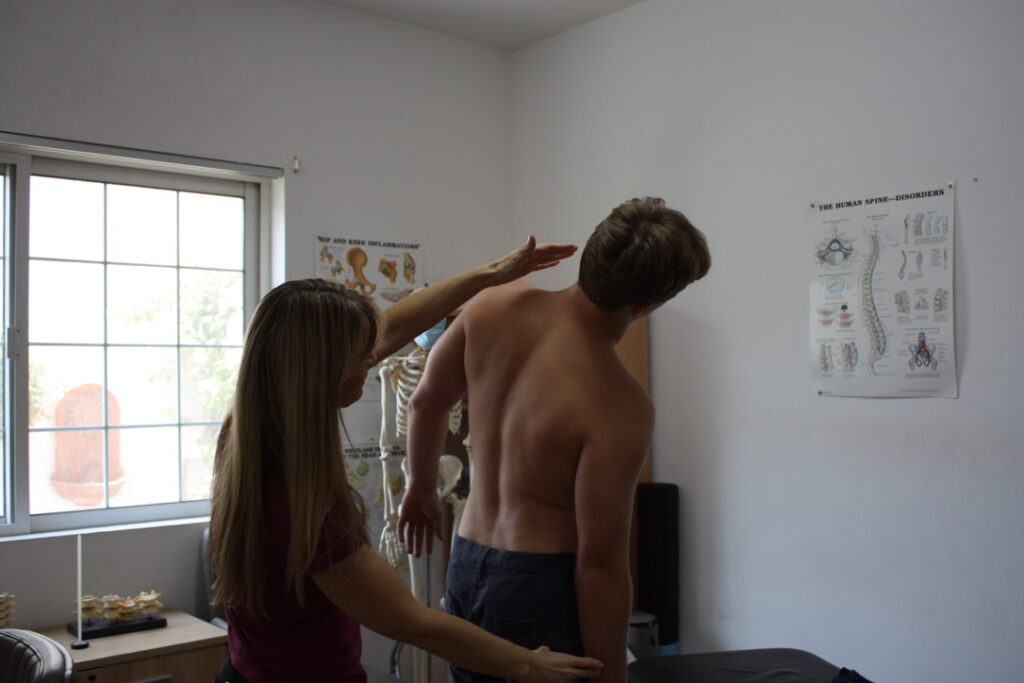
Tips For Back Care
- Exercise regularly
- Change position and take frequent breaks to avoid ‘computer hump’
- Pace yourself when the work is heavy or repetitive
- Adjust your car seat so that it is right for you and take breaks and stretch on long journeys
- Watch your children’s posture and they should avoid carrying bags on one shoulder
- Be careful lifting, for example, small children and shopping
- Is your mattress getting old or is it still able to support your spine’s natural curves?
- If you are suffering with back pain, see an Osteopath sooner rather than later
If you are experiencing back pain, book an appointment using the button below.
Suffering with back pain?
I can help you find a diagnosis and effective solution to achieve long lasting results.
Call or fill out a contact form to make your booking.
hip pain
If you are suffering with any of these symptoms, then Osteopathy treatment may be the solution:
- Clicking in the groin which may be painful?
- Hip pain when going up or down stairs, walking or getting in and out of the car?
- Do your hips feel tight with stretching?
- Do you have pain in your hips or pelvis either during or after pregnancy?
- Pain in the hip when you lie on it in bed?
- Stiffness when you move your hip?
- Groin, inner thigh or Gluteal pain with weight bearing movements?
The hip joints are localised at the sides of your pelvis although the crests of your pelvis are sometimes referred to by people as hips as well and these areas can also frequently be painful too.
There are many conditions that can cause hip or groin pain. The most common ones that people present with are: osteoarthritis, muscle injury, hip bursitis and referred pain from the lower back or knee.
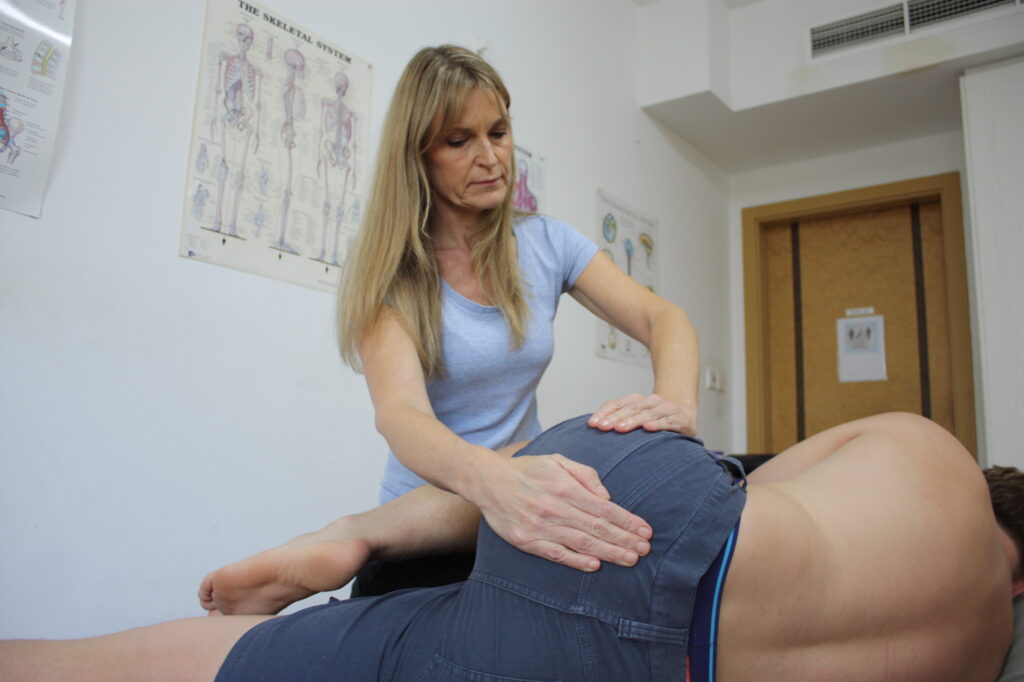
How can osteopaths help with hip pain?
Treatment includes gentle mobilisation of the hip joint to stretch the soft tissues and shortened muscles and to help the synovial fluid lubricate the surface of the joint reducing the stiffness and soreness. Stretching and strengthening exercises also help, especially in a non-weight bearing environment such as a pool. One of the most important things to do is keep your hip joint moving as this is critical in preventing the area seizing up.
Not all ‘hip’ pain comes from the hip which is why it is important to seek professional advice. Osteopathic treatment will also look at the lower back and knee, ankle and foot movement to help determine the cause of your pain. Poor posture or a lower back or knee injury can cause the lumbar and pelvis biomechanics to change affecting how the hip is used.
If you are experiencing hip pain, book an appointment using the button below.
Common Causes of hip pain
Bursitis
A deep toothache-like pain on the side or behind the hip joint. Symptoms also include localised pain when sitting on a hard surface or when lying on the affected hip, swelling/warmth, some limited hip movement. It is usually the result of friction caused by tightening of the muscles that turn the hip out which then start to rub against the fluid filled sac (called a bursa) that separates the tendons from the bone underneath. The job of this sac is to prevent friction of the muscle against the bone, but unfortunately it can get painfully irritated and inflamed too. It is commonly caused by overuse e.g. from jogging, tennis and squash.
Irritable Hip Syndrome
This is when someone has hip symptoms but nothing show up on an x ray. This is often a developing hip problem at an early stage where you might notice tightness around the joint when trying to do a particular stretch in yoga or when getting up after sitting for a long time. There may also be occasional catching in the groin area or pain in the upper part of the inner thigh. It may be due to muscle imbalance around the hip joint which usually responds well to treatment allowing greater pain free mobility.
Dysplasia of the hip
A congenital deformity (DDH) where a baby is born with a shallow hip socket making the ball unstable in the socket. The ligaments may also be loose and stretched and if severe the hip may dislocate. It is usually hereditary and can affect one or both hips although it often affects the left and is more common in girls and first born children. It is usually diagnosed at birth and the baby will be put in a cast for several months to encourage normal hip development. However, if it is missed or left untreated it can lead to pain and osteoarthritis in early adulthood. It may also result in the legs being different lengths, it can alter gait and it can affect general hip mobility.
Other common causes of hip pain
Wear and tear in the joint itself, which can happen not only with age but also much earlier in life due to accidents or intense and repetitive sports. A dancer or netball player, for example, may develop it from favouring one leg when landing from a jump.
- Osteoarthritis of the hip is common in adults. It can be due to chronic trauma secondary to pelvic imbalance for example, dysfunctions in the knee, foot and ankle or from past sports injuries. Symptoms include pain which is made worse with movement but relieved with rest, tenderness in the region of the groin, restricted hip movement, grinding noise or sensation in the hip joint and altered gait such as limping.
- Over-strained hip joint muscles are painful. They are often associated with a specific event usually related to an accident or strenuous physical activity. An injury to an ankle or knee can also result in having to hitch the hip up on the affected side as part of a limp when walking. This in turn causes tightening of the surrounding muscles. Muscle injury often occurs in people who participate in sports activities e.g. soccer, basketball, running, dancing and rugby players. Most muscle injuries heal within a few days. However, if it becomes a chronic problem, it is important to have it checked to see if there is any joint dysfunction or muscular imbalance causing it to flare up regularly.
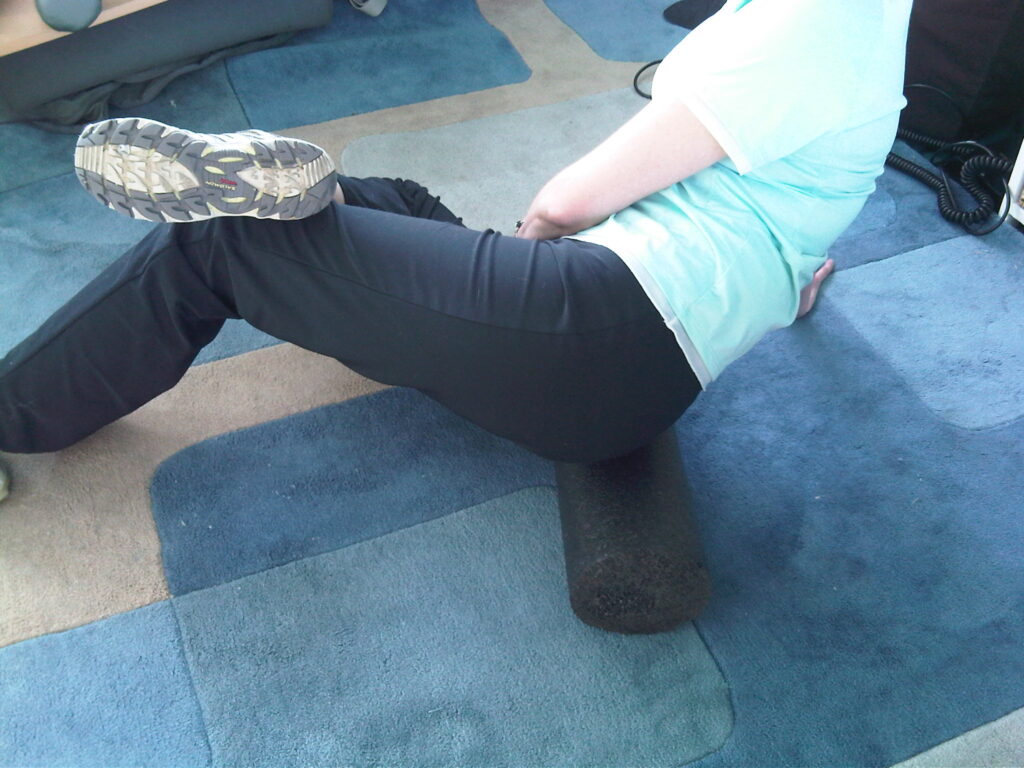
Suffering with hip pain?
I can help you find a diagnosis and effective solution to achieve long lasting results.
Call or fill out a contact form to make your booking.
Knee pain
Knee pain is one of the most common complaints I see with one in five of us experiencing it. It affects all age groups, from toddlers to the elderly and it may be acute or chronic in nature. The knee joint is the largest and one of the most complex joints in the body so knee pain can present in several different ways with a wide variety of causes. Knee pain may be either referred pain or related to the knee joint itself. It will usually involve inflammation and swelling of the tissues in or around the knee joint and the pain can be at the front, back, sides or below the knee or behind the knee cap itself. The knee is a hinge joint which means it can bend, straighten and twist. There are 4 main ligaments which hold the joint together and stabilise it and together with the muscles which move the joint.
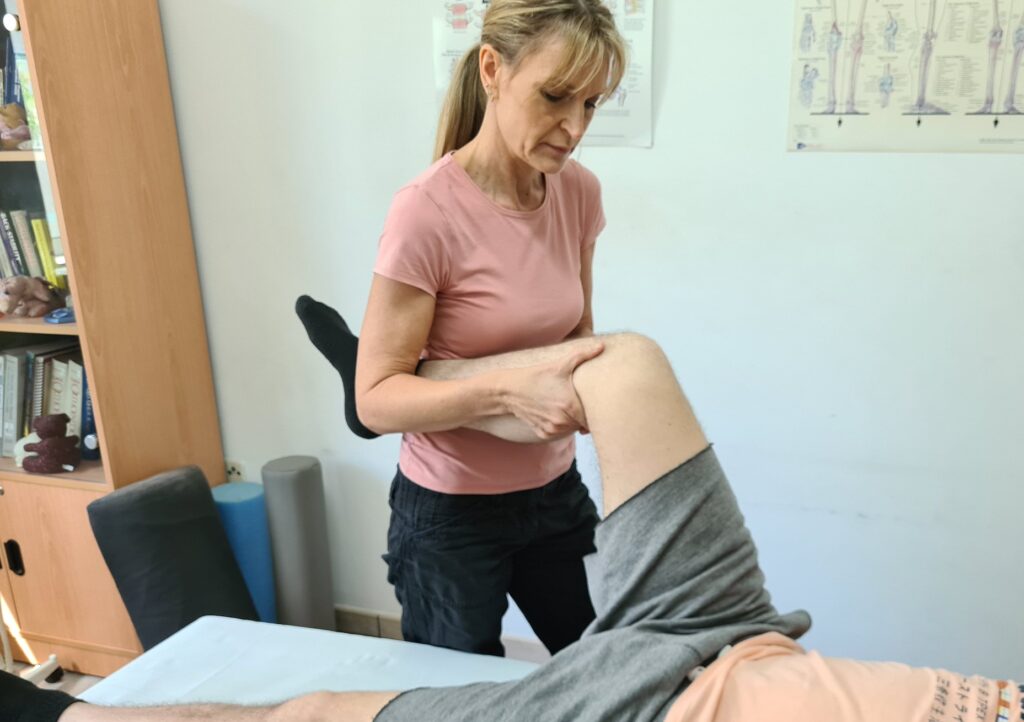
How can osteopaths help with knee pain?
Osteopaths always seek to treat the underlying cause of any problem. In the case of knee pain, we often focus on the acute presentation first. Techniques we use aim to improve joint mobility, stretch muscles, decrease inflammation, facilitate healing and rebalance the mechanics of your body. We will then also look for other compensations taking place from the feet & ankles up to the hip and low back which may contribute to your knee pain. We give stretches and exercises to increase the strength and flexibility of your knee as well as advice on posture when working, at home or enjoying sports. We also advise on how to minimise or avoid the factors that we know can increase your risk of having knee problems, including:
- Weak or inflexible muscles can increase the risk of knee injuries. Strong muscles help to stabilise and protect your joints and having flexible muscles helps you to have full range of mobility.
- Excess weight. Being overweight increases stress on your knee joints, even during activities such as walking or going up and down stairs. It also puts you at increased risk of Osteoarthritis by accelerating the breakdown of joint cartilage.
- Some sports put more stress on your knees than others such as running or jogging which increases the risk of knee injury due to the repetitive compressive forces.
If you are experiencing knee pain, book an appointment using the button below.
Common Symptoms
The symptoms people often present with include:
- Swelling and stiffness
- Redness and warm to the touch
- Weakness or instability
- Grinding, popping or grating noises
- Locking, where you are unable to either straighten or bend the knee
- Pain when kneeling or going down stairs
- Pain when sitting for long periods
- Pain from running
The type of pain can range from a slight ache all the way up to debilitating pain where even weight bearing or walking is difficult.
If you are suffering from any of the following cases, please contact your Medical practitioner:
- you are unable to bear any weight on your leg
- you have an obvious deformity of your knee or leg
- You have a fever in addition to the redness, pain and swelling in your knee
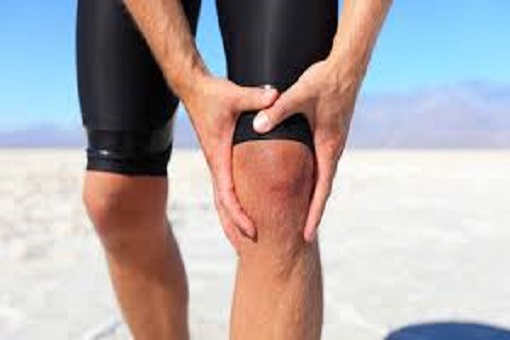

Common Causes of knee pain
Knee pain may be the result of a collision or fall causing injuries such as a sprained or ruptured ligament, a strained muscle or tendon or a torn Meniscus (cartilage). However, knee pain may also be due to altered muscle mechanics which often affects the kneecap. Osteopaths will determine the cause of your knee pain and help you correct the mechanical imbalances of your knee and other associated regions so that you can move around confidently. Medical conditions include arthritis, gout and infections which cause inflammation and pain.
A knee injury can affect any of the ligaments, tendons or fluid-filled sacs (bursae) that surround your knee joint as well as the bones, cartilage and ligaments that form the joint itself. Thankfully, the majority of patients we see complaining of knee problems can be helped very effectively by Osteopathic treatment and an exercise program.
If you are experiencing knee pain, book an appointment using the button below.
Common Knee Injuries
- Anterior/Posterior cruciate ligament (ACL/PCL) these are two of the ligaments that connect your shinbone to your thighbone. ACL & PCL injuries are particularly common in people who play sports that require sudden changes in direction or twisting of the body while the foot is firmly planted can also sprain one of the cruciate ligaments. Immediate severe pain and swelling can be expected at the time of injury and usually a feeling of instability. If there’s a major tear there will be sudden and painful swelling in the knee at the time of injury.
- Torn meniscus/cartilage the meniscus is formed of tough cartilage and it acts as a shock absorber between your shinbone and thighbone. It can be torn or trapped if you suddenly bend and twist your knee while bearing weight on it. This often produces symptoms of locking, giving-way &/or swelling.
- Knee bursitis some knee injuries cause inflammation in the bursae, which are small sacs of fluid that cushion the outside of your knee joint. You may experience some swelling, warmth and pain at the site.
- Patellar tendinitis – the Patella tendon connects the quadriceps muscle to the shin bone. Tendinitis is an inflammation that develops in this tendon causing pain often felt below the knee cap, affecting people involved in jumping sports or activities, runners and cyclists.
- Patellofemoral pain syndrome refers to pain between the kneecap (patella) and the underlying thigh bone (femur). The under surface of the Patella may get irritated as it slides up and down the Femur commonly the result of an imbalance in the muscles controlling this movement. A grating sensation may be felt in the joint and the wear and tear of the cartilage under the Patella is known as Chondromalacia Patellae.
- Osteoarthritis is the most common type of arthritis. It’s a wear-and-tear condition that occurs when the cartilage in your knee deteriorates with use and age. Patients with Osteoarthritis usually report knee pain that gets worse with activity, prolonged sitting or within half an hour of waking.
- Osgood-Schlatter’s disorder is an overuse problem more common in athletic adolescents and active children. The Quadriceps muscles at the front of the thigh pull at the surface of the Tibia where they attach just below the knee. This often results in a painful, visible bump.
- Muscle strain
- Iliotibial band syndrome occurs when the band of tissue extending from the outside of your hip down the outside of your thigh to your knee (iliotibial band) becomes very tight causing it to rub against your femur. Distance runners and cyclists are susceptible to this condition.
- Hip or foot dysfunction. If you have a hip or foot problem, you may change the way you walk to take the pressure off these painful joints. This changed gait can place extra stress on your knee joint.
Suffering with knee pain?
I can help you find a diagnosis and effective solution to achieve long lasting results.
Call or fill out a contact form to make your booking.
Foot and Ankle pain
Foot and ankle pain can occur at any age and for many reasons. I see many cases of foot pain here in Dubai, partly due to the fact that a lot of people frequently walk around on the hard floors with bare feet. Over time this can irritate and inflame the tissues on the sole of the feet.
The foot is made up of many small bone which are connected to each other by ligaments, muscles and fascia. They all need to be working well together to provide the flexibility, strength and stability that the foot and ankle need to be able to function properly.
Certain activities or lifestyle choices can jeopardise this. An example of this is would be people that run a lot. Repeated high impact through the feet and ankles together with a tendency for the muscles of the calf to tighten up or perhaps the possibility of landing a step awkwardly all increase the risk factors for foot pain and ankle sprains.
Footwear may be another factor especially if the shoes are either too tight or not supportive. High heels in particular place immense strain on the calf muscles as well as the low back and hips while flip flops and flat shoes do not provide adequate support for the arches of the foot.
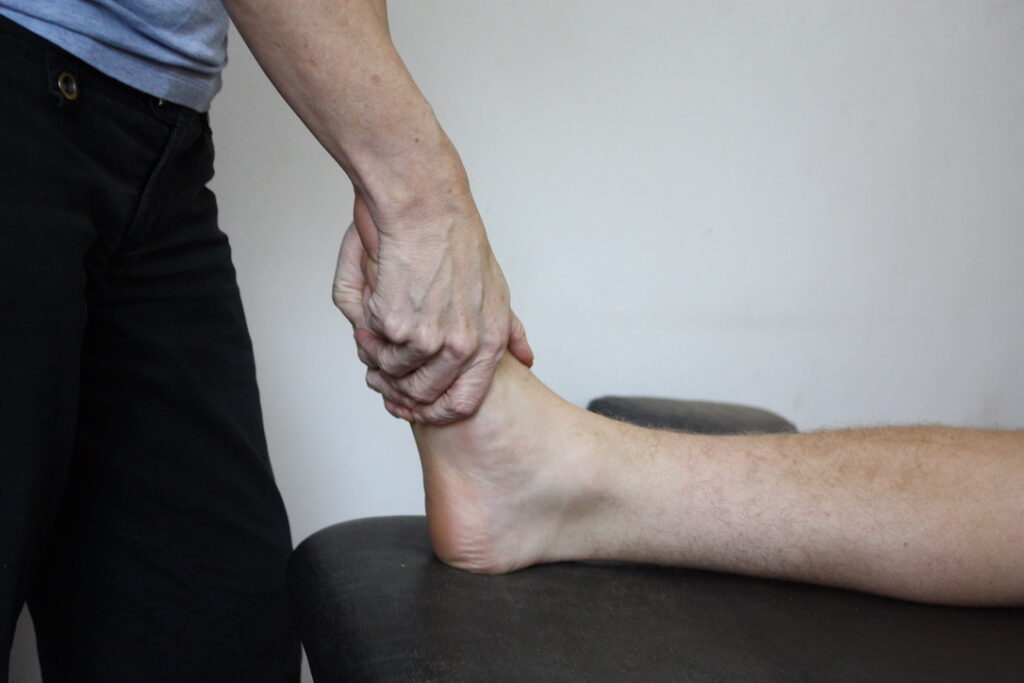
How can osteopaths help with foot and ankle pain?
Osteopaths will be able to help determine the cause of your pain, by asking you about the onset of the symptoms and any previous history. We consider if the pain is originating from your foot or whether it is referred pain, for example, nerve pressure from your lower back. Most conditions can be dealt with using conservative treatment, but occasionally we sometimes have to refer patients to GP or foot and ankle specialist. We may also refer you to a podiatrist for their opinion and for specialist foot supports.
We can provide treatment and advice for all of the conditions above. In the first 24-48 hours after an acute injury to your foot or ankle, Osteopath’s often advise rest, ice, elevation and compression. Treatment may include massage, joint mobilisation & manipulation, stretching and advice on exercises to do at home. As well as treating the foot and ankle, we may also work on other areas of the body if we feel they are contributing to your symptoms such as the hips, knees pelvis and back.
If you are experiencing foot or ankle pain, book an appointment using the button below.
Common Foot And Ankle Conditions
Flat Feet
Flat foot is when the long arch on the inside border of your foot drops down and flattens. If your foot rolls inwards towards the inside border of your foot, it is known as over-pronation. This can occur for many reasons one of which being if the heel on your shoe wears down unevenly. Over-pronation can cause damage to your ankle joint and Achilles tendon and may even cause shin pain. Symptoms you may experience with either of these foot conditions include, pain, swelling, change in your foot shape and possibly knee pain.
Plantar Fasciitis
Plantar fasciitis is a common condition that causes pain and inflammation in the tough fibrous band of tissue supporting the arches of your foot. Patients often describe a sharp pain most often under the heel or instep of your foot and it can often be painful putting the foot on the floor first thing in the morning. This can be due to various reasons such as overuse, weight gain for example during pregnancy or unsupportive footwear. It can sometimes lead to the formation of a heel spur which is a small hook of bone that forms where the plantar fascia attaches to the under surface of the heel bone (Calcaneus). Some patients also report that the sole of their foot can occasionally feel a little numb, tingly or swell slightly.
Sprained Ankle
A sprained ankle is typically the result of a sudden twisting or “going over” on the ankle joint. Most commonly this strains the ligaments on the outside of the ankle joint and they are either stretched too far or they may tear. Tears are graded and range from a small tear to a complete rupture. This can occur as a result of landing awkwardly, a pre-existing ankle injury or ankle hypermobility. Symptoms we typically see are swelling, bruising, pain and instability of the ankle joint.
Other Common Foot and Ankle conditions
- Achilles tendinopathy – causes local pain and tightness at the back of the heel made worse by walking or running. It is often due to overuse, excessive stretching or foot over or under-pronation. Exercises are also given in addition to manual therapy to help repair the tendon whose matrix becomes disorganised in this condition.
- Tarsal Tunnel Syndrome – This is a painful foot condition in which the Tibial nerve is compressed as it travels through the tarsal tunnel on the inside of the ankle.
- Morton’s Neuroma – A benign swelling or neuroma forming in a digital nerve which supplies the toes. It most commonly develops between the third and fourth toe spaces but can occur between the second and third toes. It may feel like a burning pain between your toes or electric shock type pain shooting into the toes themselves.
- Metatarsalgia- Pain at the ball of the foot resulting from overuse or high impact sports such as running or jumping, foot abnormalities, poor footwear or arthritis. The pain may improve with rest and get worse on standing. Your foot may feel like you are walking with a small stone in your shoe, with a sharp burning or shooting pain in the ball of your foot and possible numbness or tingling in your toes.
- Osteoarthritis – Degenerative joint disease that results from the breakdown of the joint cartilage and underlying bone. Symptoms experienced are varying degrees of a pain and stiffness in the joint, joint swelling and difficulty walking or bending the joint.
- Gout –An inflammatory arthritis which is characterised by recurrent sudden severe attacks of pain, swelling most often affecting the joint of the big toe. Pain typically comes on rapidly in less than twelve hours and can wake you abruptly with the sensation your toe is on fire.
Suffering with foot or ankle pain?
I can help you find a diagnosis and effective solution to achieve long lasting results.
Call or fill out a contact form to make your booking.
FAQs
When you are seen for the first time, you will be asked questions about your symptoms and general medical history which will include any medications you are taking or other factors that may not appear to be directly related. Osteopaths are interested in the history of any illnesses or accidents or trauma as well as any current health issues. This allows us to consider how accidents or mild strains caused by falls or illnesses may have impacted on longstanding back pain or a sports injury. Easing the strain on a rib after a fall from a bike may also be assisted by treatment of the pelvis. If you sprain your ankle, your body may compensate for it by stiffening up in the spine and shoulders so even if your ankle recovers with time, the uneven weight bearing that it caused may be the reason you now have nagging back pain.
I will also be able to advise you if your condition is suitable for Osteopathic treatment or if you need to be referred to a different specialist. I may also refer you if I feel you require necessary medical tests which might include X-rays, scans, and blood tests.
As your Osteopath, I will then conduct an examination and clinical tests. These include diagnostic, orthopaedic or neurological tests, postural assessments and activities or exercises, in order to determine how best to manage your condition.
I will observe your posture and ask you to perform some simple movements to help assess how your body is functioning and why you are experiencing your symptoms. The examination may include passive movements where I move your joints through their range of movement and also active movements where I will ask you to move yourself.
Osteopathy takes a whole of body approach to treatment. I may therefore look at the area that is troubling you as well as other parts of your body. For example if you have a sore knee, I may also look at your ankle, pelvis and back.
I will discuss the prognosis with you and, if treatment is appropriate, what treatment would be recommended. As your Osteopath, I may also provide education and advice to help you manage your condition between treatments. This may include giving you ergonomic advice for your work station or exercises to do at home.
It is recommended that you arrive 10 minutes early for your first Osteopathy consultation to complete your personal data for registration purposes if you are not already an existing patient of the clinic. You will also be asked to sign the consent to treatment form which is a requirement of the Dubai department of health.
It is important you feel completely comfortable before and during treatment. It is best to wear appropriate clothing such as leggings, shorts, loose T shirts & trousers etc. Depending on the area of your body requiring treatment, as your Osteopath, I may ask you to undress to your under garments. There is a secure changing area available and towels can be provided for cover as needed.
Bring along any X-rays, scans or test results or previous reports that you may have.
Yes you can have a friend or relative present throughout your consultation and treatment. Please bear in mind that some of the case history questions can be personal so you may prefer to invite them in once this has been taken.
While some Osteopaths exclusively use hands on or manual therapy techniques with their patients, many Osteopaths including myself, also use other complimentary treatment modalities. Therefore I may also use low level laser therapy which is now known as Photobiomodulation therapy, a massage machine called a Vibrocussor and a joint mobilising instrument known as Arthostim to assist your treatment program.
Most osteopathy treatments involve some form of manual therapy and should not cause undue discomfort. If your injuries do require treatment of painful and tender areas, I will inform you and aim to make you as comfortable as possible.
You may experience mild soreness for a day or two after treatment, similar to that felt after mild exercise. This is a completely normal and is a healthy response to treatment and can last anywhere between 24-72 hours.
The first consultation and all follow up treatment sessions last around 30 minutes.
The number of treatments you require depends on the condition being treated and varies from person to person. Generally you would expect to see some changes in your symptoms after one or two visits but you may need several treatments. For acute cases the average number of treatments is 4-6 whilst long term or chronic problems can take longer. You can be assured that I will try to get you better in the shortest amount of time possible.
Following your Osteopathy consultation or treatment, I may feel that additional investigations such as X-ray, scans or blood tests are required to fully diagnose the condition and in this case I will refer you to another health professional to arrange them.
It is important you tell me as your Osteopath if your medical condition changes over time. This includes any new injuries or change of medications.
Most health care providers in Dubai do cover Osteopathy but it is always best to check that yours does. Some insurance companies may require a referral for treatment from a Family Medicine Specialist or other consultant such as an Orthopaedic specialist or a Neurologist.

